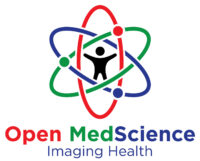Indium-111 oxyquinoline is a radiopharmaceutical agent with diverse diagnostic imaging, therapy, and research applications. Indium-111 is a radioactive isotope of indium, with a half-life of 67.3 hours, making it suitable for use in nuclear medicine. In addition, oxyquinoline is a chelating agent that forms a stable complex with indium-111, allowing it to be incorporated into various biological systems for diagnostic and therapeutic purposes.
Indium-111 Oxyquinoline: Stability, Low Toxicity, and Versatile Labelling for Enhanced Diagnostic Applications
Indium-111 oxyquinoline is characterised by its excellent in vivo stability, low toxicity, and versatile labelling characteristics. When complex with indium-111 oxyquinoline forms a highly lipophilic compound that can easily cross cell membranes and enter various tissues, making it a suitable candidate for various applications.
The radiopharmaceutical agent is generally prepared by mixing 111In chloride with a solution of oxyquinoline in an acidic medium, followed by neutralisation and purification steps.
A Powerful Tool for Leukocyte, Platelet, and Tumour Imaging, and Advancing Cell Research
- Indium-111 oxyquinoline has been extensively used for labelling leukocytes (white blood cells), which is crucial in detecting infectious and inflammatory diseases. Once labelled, the leukocytes can be reinfused into the patient, allowing visualisation of areas of infection or inflammation through gamma camera imaging.
- Another important application of this imaging agent is in the labelling of platelets. This technique is employed to study platelet kinetics and the detection of sites of thrombus formation in patients with thromboembolic disorders.
- This imaging agent has also been utilised for tumour imaging, particularly in cases where other conventional imaging techniques have been inconclusive or contraindicated. The agent can label tumour cells directly or indirectly by labelling immunoglobulins or monoclonal antibodies, which bind specifically to tumour-associated antigens.
- The ability to label a wide range of cell types with indium-111 oxyquinoline has made it a valuable tool for studying cell trafficking and biodistribution in vivo. This application has been vital in stem cell research and the development of cell-based therapies.
Exploring Limitations and Emerging Alternatives in Radiopharmaceutical Imaging
Despite its many advantages,111In-oxyquinoline has certain limitations. The agent’s relatively high radiation dose to the patient and the limited resolution of gamma camera imaging may restrict its use in specific clinical scenarios. Moreover, the emergence of alternative labelling techniques, such as positron emission tomography (PET) with fluorine-18 or zirconium-89, may eventually overshadow the use of indium-111 oxyquinoline due to their superior sensitivity and spatial resolution.
Disclaimer
The information provided in this article is intended for educational and informational purposes only and is not a substitute for professional medical advice, diagnosis, or treatment. Indium-111 oxyquinoline is a radiopharmaceutical agent used in specialised clinical and research settings under the supervision of qualified healthcare professionals. Readers are advised not to use the information herein for self-diagnosis or treatment of any health condition.
While every effort has been made to ensure the accuracy and reliability of the content, no guarantees are made regarding its completeness or suitability for any particular purpose. The authors and publishers of this content disclaim all liability for any direct, indirect, incidental, or consequential loss or damage arising from the use of the information provided.
Use of radioactive materials must comply with applicable local, national, and international regulations. Any handling, preparation, or administration of Indium-111 oxyquinoline should be conducted by trained personnel in authorised facilities.
Furthermore, any mention of emerging alternatives or competing imaging techniques does not imply endorsement or recommendation, but serves to provide context within the evolving field of nuclear medicine and molecular imaging.
You are here: home »